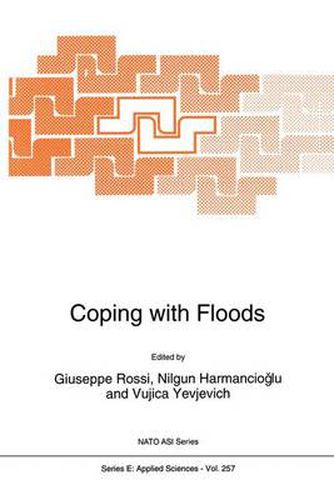Readings Newsletter
Become a Readings Member to make your shopping experience even easier.
Sign in or sign up for free!
You’re not far away from qualifying for FREE standard shipping within Australia
You’ve qualified for FREE standard shipping within Australia
The cart is loading…






This title is printed to order. This book may have been self-published. If so, we cannot guarantee the quality of the content. In the main most books will have gone through the editing process however some may not. We therefore suggest that you be aware of this before ordering this book. If in doubt check either the author or publisher’s details as we are unable to accept any returns unless they are faulty. Please contact us if you have any questions.
Floods are natural hazards whose effects can deeply affect the economic and environmental equilibria of a region. Quality of life of people living in areas close to rivers depends on both the risk that a flood would occur and the reliability of flood forecast, warning and control systems.
Tools for forecasting and mitigating floods have been developed through research in the recent past. Two innovations currently influence flood hazard mitigation, after many decades of lack of significant progress: they are the development of new technologies for real-time flood forecast and warning (based on weather radars and satellites) and a shift from structural to non-structural flood control measures, due to increased awareness of the importance of protecting the environment and the adverse impacts of hydraulic works on it.
This book is a review of research progress booked in the improvements of forecast capability and the control of floods. Mostly the book presents the results of recent research in hydrology, modern techniques of real-time forecast and warning, and ways of controlling floods for smaller impacts on the environment. A number of case studies of floods in different geographical areas are also presented.
Scientists and specialists working in fields of hydrology, environmental protection and hydraulic engineering will appreciate this book for its theoretical and practical content.
$9.00 standard shipping within Australia
FREE standard shipping within Australia for orders over $100.00
Express & International shipping calculated at checkout
This title is printed to order. This book may have been self-published. If so, we cannot guarantee the quality of the content. In the main most books will have gone through the editing process however some may not. We therefore suggest that you be aware of this before ordering this book. If in doubt check either the author or publisher’s details as we are unable to accept any returns unless they are faulty. Please contact us if you have any questions.
Floods are natural hazards whose effects can deeply affect the economic and environmental equilibria of a region. Quality of life of people living in areas close to rivers depends on both the risk that a flood would occur and the reliability of flood forecast, warning and control systems.
Tools for forecasting and mitigating floods have been developed through research in the recent past. Two innovations currently influence flood hazard mitigation, after many decades of lack of significant progress: they are the development of new technologies for real-time flood forecast and warning (based on weather radars and satellites) and a shift from structural to non-structural flood control measures, due to increased awareness of the importance of protecting the environment and the adverse impacts of hydraulic works on it.
This book is a review of research progress booked in the improvements of forecast capability and the control of floods. Mostly the book presents the results of recent research in hydrology, modern techniques of real-time forecast and warning, and ways of controlling floods for smaller impacts on the environment. A number of case studies of floods in different geographical areas are also presented.
Scientists and specialists working in fields of hydrology, environmental protection and hydraulic engineering will appreciate this book for its theoretical and practical content.